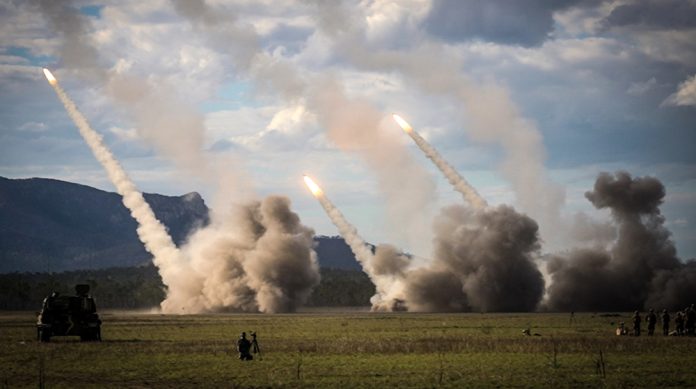On Saturday, as tensions with China in the Indo-Pacific region grew, the United States and Australia practiced precision missile strikes during war games. This was the latest in a string of actions taken by the partners.
As a part of the two-week Talisman Sabre joint military exercises, live-fire drills were conducted at the Shoalwater Bay military complex in Queensland’s northeast.
read more: Australia ready to supply Ukraine with new military package
The move coincides with Canberra’s reorganization of its military strategy, which emphasizes long-range firepower in an effort to distance itself from potential adversaries.
The drill also included testing of the US-made High Mobility Artillery Rocket System (HIMARS), according to Australian Army Major Tony Purdy. This system was recently sold to the Australian Defense Force.
The missile system, according to Purdy, will “provide a significant capability boost” and desperately needed “long-range precision.”
These initiatives and “firsts,” according to Major Jimmy Sheehan, Talisman Sabre spokesperson for US forces will ultimately result in an exercise that will improve Australia and the US capacity to “respond to global security challenges in the region.”
“The most important message that China can take from this exercise and anything that our allies and partners do together is that we are extremely tied by the core values that exist among our many nations,” US Secretary of the Navy Carlos Del Toro said at the beginning of the exercises on Friday.”
While preparations for the military exercises were taking place, Lieutenant General Greg Bilton, Australia’s head of joint operations, asserted that a Chinese spy ship had been sighted off the country’s northeastern coast.
More than 30,000 troops, as well as military partners and observers from thirteen Indo-Pacific nations, including Japan, France, Germany, and South Korea, are participating in the joint military exercises.
At a ceremony held on Saturday at an Australian naval base on Sydney Harbor, the US commissioned the Independence-class littoral combat ship (LCS), which was given the name USS Canberra. This marked the ship’s official addition to the US Navy’s active fleet.
This marks the first time a US Navy vessel has entered active service at a foreign port as the two close allies strengthen their military ties in response to China’s expanding regional reach.
China has repeatedly cautioned against the creation of an “Asia-Pacific version of NATO” and stated its opposition to any foreign military presence in the area.
It categorically opposed NATO’s eastward expansion into the Asia-Pacific region earlier this month, announcing that it would respond resolutely to any threat to its legitimate rights.
The warning followed a statement made at a NATO summit on July 12 in Vilnius, the capital of Lithuania, in which it was claimed that China’s “malicious hybrid and cyber operations, as well as its confrontational rhetoric and disinformation target Allies and harm Alliance security.”
The NATO communiqué, according to China, misrepresents China’s position and policies. It also claims that the activities of the Western military alliance “will inevitably undermine regional peace and stability and stoke camp competition.”













